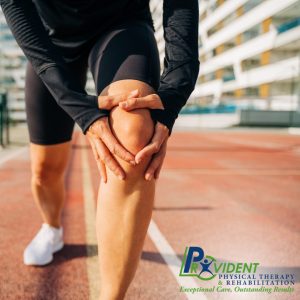Common Knee Injuries: Understanding Knee Pain and Treatment Options
Knee injuries are a significant concern for individuals of all ages, particularly those engaged in sports or physical activities. The knee is the largest joint in the body, comprised of various structures that work together to allow for movement and support. Understanding common knee injuries, their causes, and effective treatment options from physical therapy in Elwood, NY is crucial for maintaining mobility and overall quality of life.
What Are Common Knee Injuries and Their Causes?
Understanding the Anatomy of the Knee
The anatomy of the knee consists of several key components, including bones, ligaments, tendons, cartilage, and the meniscus. The primary bones of the knee are the femur (thigh bone), tibia (shin bone), and patella (kneecap). Ligaments such as the anterior cruciate ligament (ACL) and posterior cruciate ligament (PCL) provide stability, while tendons connect muscles to bones, allowing for smooth motion. Cartilage cushions the knee joint, reducing friction during movement, and the meniscus serves as a shock absorber. Understanding these structures is essential in recognizing how they may be affected by various injuries.
Common Causes of Knee Injuries
Common knee injuries often arise from a combination of acute trauma and chronic wear and tear. Knees are often injured during sports activities. Sports-related activities, including running, jumping, and pivoting, may lead to ligament injuries, particularly in athletes. Additionally, falls, collisions, and awkward landings can result in injuries such as dislocation or fractures. Many knee injuries are common among middle-aged people, particularly those who engage in activities that place stress on the knee joint. Furthermore, conditions like knee osteoarthritis can exacerbate existing knee problems, leading to increased pain and limited mobility.
Sports Medicine Insights on Knee Problems
Sports medicine professionals emphasize the importance of understanding the mechanics of the knee to prevent injuries. Injuries may occur due to improper technique, inadequate warm-up, or overexertion. Additionally, certain anatomical factors, such as misalignment or weakness in the muscles around the knee, can increase the risk of injury. Rehabilitation strategies often include physical therapy to strengthen the surrounding musculature, enhance flexibility, and improve overall knee function, reducing the likelihood of future injuries.
What Are the Types of Ligament Injuries in the Knee?
Anterior Cruciate Ligament (ACL) Injuries
ACL injuries are among the most common knee injuries, particularly in athletes engaged in high-impact sports such as soccer, basketball, and football. These injuries may occur when the knee is bent or twisted suddenly, often resulting in a popping sound followed by immediate swelling and pain. The management of ACL injuries may include conservative treatments, such as physical therapy, or more invasive options like knee replacement or surgical reconstruction, depending on the severity of the injury.
Posterior Cruciate Ligament (PCL) Injuries
PCL injuries are less common than ACL injuries but can still be significant. These injuries typically occur when there is a direct impact to the front of the knee while the knee is bent, such as in a car accident or a sports collision. Symptoms include swelling, pain, and instability in the knee joint. While many PCL injuries can be managed with conservative treatment options, severe cases may require surgical intervention to restore knee function.
Management of Knee Ligament Injuries
The management of knee ligament injuries often involves a multi-faceted approach. Initial treatment may focus on reducing pain and swelling through rest, ice, compression, and elevation (RICE). Following this, physical therapy plays a crucial role in rehabilitation. Strengthening exercises targeting the muscles around the knee, particularly the quadriceps and hamstrings, can help restore stability and function. In cases where injuries may require surgery, a thorough evaluation by a sports medicine specialist is essential to determine the best course of action.
How Do Cartilage and Meniscus Injuries Occur?
The Role of Cartilage in Knee Function
Cartilage is a vital component of the knee joint, providing a smooth surface for the bones of the knee to glide against one another. Injuries that damage the cartilage can lead to significant knee pain and dysfunction. Cartilage injuries may occur as a result of acute trauma, such as a fall or collision, or from the gradual wear and tear associated with conditions like knee osteoarthritis. Understanding the role of cartilage in knee function is critical in addressing knee pain and developing effective treatment options.
Common Meniscus Injuries and Symptoms
Meniscus injuries are also common knee injuries, particularly among athletes and active individuals. The meniscus can be torn during activities that involve twisting or turning movements while bearing weight on the knee. Tears often happen during sports. Symptoms of a meniscus tear may include swelling, stiffness, and difficulty bending or straightening the knee. In some cases, individuals may experience a locking sensation in the knee joint, making it difficult to move. Prompt diagnosis and treatment are essential for optimal recovery.
Treatment Options for Cartilage and Meniscus Damage
Treatment options for cartilage and meniscus damage as a result of an injury may vary based on the severity of the injury. Conservative management often includes physical therapy to strengthen the muscles around the knee, improve flexibility, and reduce pain. In cases where conservative treatment does not provide relief, surgical options may be considered. Arthroscopic surgery can repair or remove damaged cartilage, helping to restore function and alleviate knee pain.
What Are the Signs of Knee Dislocation and Fractures?
Identifying a Dislocated Kneecap (Patella)
A dislocated kneecap, or patella, occurs when the patella slips out of its normal position, often due to a direct impact or sudden change in direction. Signs of a dislocated kneecap include visible deformity, swelling, and intense pain around the bent knee. Individuals may find it impossible to straighten or move the knee. Immediate medical attention is necessary to realign the patella and prevent further complications.
Symptoms and Treatment of Knee Fractures
Knee fractures, which are common among individuals involved in high-impact sports or activities, can cause severe pain and inflammation, swelling, and bruising. Symptoms may include difficulty bearing weight on the affected leg and visible deformity in severe cases. Treatment for knee fractures typically involves immobilization, either with a brace or cast, and may require surgical intervention for more complex fractures to ensure proper healing.
Recovery and Rehabilitation After Dislocation or Fracture
Recovery from a dislocation or fracture involves a comprehensive rehabilitation process. Following the initial treatment, physical therapy is crucial for restoring strength, flexibility, and range of motion in the knee. Gradual progression of exercises is essential for rebuilding confidence and functionality in the knee joint. Education on proper movement mechanics and injury prevention strategies can further aid in the recovery process.
What Treatment Options Are Available for Knee Pain?
Physical Therapy Near Elwood, NY for Knee Injury Management
Physical therapy is a cornerstone of knee injury management, providing a structured approach to rehabilitation. A qualified physical therapist will develop a personalized exercise program tailored to the individual’s specific needs and goals. This program may include strength training, stretching, and functional exercises designed to improve mobility and reduce knee pain. Physical therapy near Elwood, NY, offers various techniques, including manual therapy and modalities such as ultrasound, which can aid in pain relief and recovery.
When Surgery May Be Required for Knee Issues
In some cases, knee injuries may require surgical intervention, particularly when conservative treatments fail to alleviate symptoms or restore function. Surgical options, such as arthroscopy, can address issues like torn ligaments, damaged cartilage, or meniscus tears. In more severe cases, a total knee replacement may be necessary to relieve pain and improve mobility for individuals suffering from advanced knee osteoarthritis or significant joint damage.
Tips for Knee Pain Prevention and Care
Preventing knee pain involves a combination of proper conditioning and lifestyle choices. Engaging in regular strength and flexibility training can help support the knee joint and prevent injuries. Additionally, maintaining a healthy weight reduces stress on the knee, while wearing appropriate footwear during physical activities can enhance stability. Individuals should also be mindful of their movement mechanics to avoid unnecessary strain on the knee. Incorporating rest and recovery into training regimens is essential for long-term joint health.
Physical Therapy Near Elwood, NY
Knee pain doesn’t have to limit your mobility and quality of life. With the right approach, including physical therapy near Elwood, NY, at Provident Physical Therapy, you can find relief and improve your range of motion. By combining customized exercise programs, manual therapy techniques, modalities for pain relief, education, and lifestyle modifications, our team is dedicated to helping you achieve your goals and get back to doing the things you love, pain-free. Don’t let a knee injury hold you back—schedule an appointment with us today and take the first step toward a healthier, more active lifestyle. Contact our office today!
